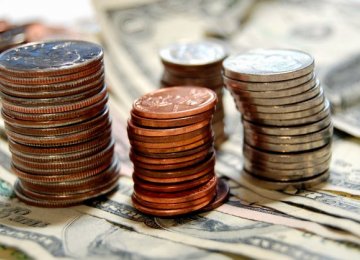When Iran last year cemented a landmark nuclear agreement with six world powers to remove many of the sanctions against it, Hassan Rouhani, the country’s moderate president, said it would aim to attract at least $30 billion a year of foreign investment.
“From today, merchants and entrepreneurs in our country can benefit from normal ways of banking transactions to start their exports,” he said.
“From today, our banks are reconnected to the world’s banking system … Today is the day of victory.”
The hope was that as Iran came in from the cold, international banks would begin to finance business in the country, spurring foreign investment and driving economic growth that had long been stunted by widespread trade restrictions.
But more than a year after the deal between Tehran and P5+1 (the US, the UK, France, China and Russia, plus Germany) came into effect, Iran’s attempts to woo international investors have borne little fruit.
Last year, 400,000 business visitors and 300 delegations of foreign investors visited the country, according to Farid Dehdilani, international affairs adviser at Iran’s Privatization Organization, which is part of its Ministry of Economic Affairs and Finance.
However, he noted that despite these visits, the country attracted only $3.6 billion of foreign investment in 2016.
“The ambiguity of the US Treasury in issuing guidance to the international banks and the election of a new president in the US have impeded the initial progress,” he says.
“We believe once logic prevails, the process of investments will be very quick.”
Variety of Factors
Investors say they have been held back by a variety of factors. Legal ambiguity about the extent of remaining restrictions, uncertainty surrounding the approach of US President Donald Trump, upcoming elections in Iran and difficulty securing financing from large banks have combined to chill their interest.
“The political goalposts seem to be shifting all the time,” says Jan Dehn, the head of research at Ashmore, the emerging markets-focused asset manager, who visited Iran last year after sanctions were lifted.
“Those uncertainties have increased significantly since the US election. Then there’s an election in [Iran in] May that may or may not produce a hardline victory. Right now the situation looks highly unstable and that was the conclusion we reached after the trip.”
Trump has not upheld a campaign proposal to scrap the nuclear accord, nor introduced fresh sanctions, but following Iran’s test of a non-nuclear ballistic missile in February, he said the country was “on notice”.
His ban against Iranian travelers to the US (later overturned by the courts) and his launch of a comprehensive review of the deal have also irked Tehran and raised questions about the future of the agreement.
The 2015 “Joint Comprehensive Plan of Action”, as the nuclear deal is known, was widely seen as a diplomatic victory for the former US administration. It lifted many international sanctions on Iran in exchange for curbs on the country’s nuclear program.
“Single Biggest Obstacle”
“The single biggest obstacle towards investing in Iran is the legal and regulatory ambiguity and there’s enough room for politics to shift the interpretation of the rules,” says Dehn.
A number of banks, including Standard Chartered, HSBC and BNP Paribas, have been fined billions of dollars in the past for abusing US sanctions and, according to Andreas Schweitzer, senior managing partner at Arjan Capital, the cost of compliance has since “skyrocketed”.
“In Europe, in theory you could behave normally, in practice because of all the fines and the rather tough position of the Americans toward the Iran situation, the big banks prefer not to deal with Iran.”
For fear of accidentally flouting remaining restrictions, most banks avoid all deals that involve Iran, though some smaller groups such as Belgium’s KBC bank and Germany’s DZ Bank have begun to handle the transactions. Rules on trades involving the US dollar have complicated the picture further.
“To get all this right, you just spend a lot of time and money doing it and that’s the point . . . The risks for a financial investor or a group are bigger than the financial return.”
With elections coming up in Iran next month, the situation could become even more complicated. Hardline rivals of the ruling party, who have struck a chord with voters over Iran’s chronic unemployment and corruption, could unseat President Rouhani and derail the fragile confidence of international investors.
Optimism
Dehdilani is adamant that this should not happen.
“The investors shall not be distracted by the internal political campaigns of any country.”
There is much at stake for Iran: “In the medium- to lon- term, growth prospects will rely on the pace of Iran’s reintegration with the global economy in banking, trade and investment and the implementation of key structural reforms,” says the World Bank.
“As Iranian banks face the challenge of delays in establishing correspondent banking relationship with large international banks, foreign direct investment inflows to Iran and trade relationships with the rest of the world are restrained.”
But many are optimistic that things will change. A number of European asset managers have launched small equity funds in Europe to buy stocks in the Tehran Stock Exchange with this in mind.
Sturgeon Capital, a London-based asset manager, is one. Clemente Capello, its founder, says that with inflation under relative control after years of volatility, it is a mistake to think only of politics: “The threshold for success for Iran is so low. [Of] the capital that is going in, nothing is leaving because there is not enough—they need foreign capital.”






Add new comment
Read our comment policy before posting your viewpoints